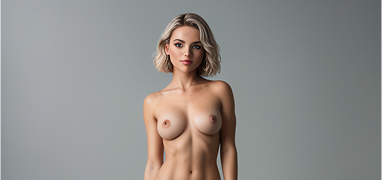
Artistic inspiration can strike like lightning — or it can feel frustratingly out of reach. Every artist, whether beginner or professional, faces creative dry spells from time to time. In today’s digital world, AI image-based prompt generators have emerged as powerful tools to help artists reconnect with their muse.
These tools don’t just provide random suggestions; they analyze visual elements and emotions within images to generate detailed creative prompts that artists can interpret visually, emotionally, and conceptually. In this blog, we’ll dive into the top 5 ways artists are using AI prompt generators to unlock new ideas, tackle creative blocks, and elevate their work.
What Is an Image-Based Prompt Generator for Artists?
An image-based prompt generator takes an image (photograph, artwork, concept design) and uses AI to create prompts. These prompts can range from conceptual themes (like “loneliness in an urban jungle”) to specific ideas (like “a neon-lit market at midnight”).
For visual artists, illustrators, painters, digital creators, and graphic designers, these prompts become rich sources of inspiration, acting as seeds for new projects.
Why Should Artists Use AI Prompt Generators?
Before we get into the top methods, it’s important to understand why artists are flocking to these tools:
- Instant Idea Generation: Quickly produce new ideas without staring at a blank canvas.
- Expand Visual Language: Explore new themes, moods, and settings you wouldn’t naturally think of.
- Challenge Comfort Zones: Get nudged into trying new styles, compositions, and narratives.
- Save Time: Jumpstart the sketching or planning process, especially for daily practice or professional work.
Now, let’s explore the top 5 ways you can use these tools creatively.
1. Kickstart Daily Sketching Routines
Consistency is critical for growing as an artist, and daily sketching is one of the best habits you can form. However, coming up with ideas every day can be exhausting.
How to use prompts:
- Upload a random photo into the generator.
- Use the generated prompt as the basis for a 30-minute sketch.
- Don’t overthink — let the AI suggest a theme or scenario and just draw.
Example:
An AI prompt from a city skyline image could be:
“Draw a lonely traveler waiting for a train in a futuristic station.”
You can reinterpret this visually in countless ways, each pushing your skills further.
2. Explore New Art Styles and Genres
Feeling stuck in the same visual style? Using prompts from varied and unexpected images forces you to adapt your style to fit new subject matter.
How to use prompts:
- Input an abstract painting, nature photo, or surreal artwork.
- Let the AI craft a strange or complex story prompt.
- Try to translate it into your current medium — or challenge yourself with a new one.
Example:
An AI-generated prompt might say:
“Illustrate a dream where trees have faces and mountains float.”
This could push a realist artist toward a more surrealist approach, encouraging stylistic evolution.
3. Create Original Concept Art for Projects
Whether you’re designing characters, worlds, or products, concept art is all about ideation. Image prompt generators can provide unexpected but detailed narratives to build upon.
How to use prompts:
- Feed in a fantasy landscape, a character photo, or architectural shots.
- Use the AI-generated text prompt to flesh out a backstory, culture, or mood for your concept.
Example:
Prompt from an ancient ruin photo:
“Design a civilization that worships glowing crystals hidden beneath the earth.”
From this single prompt, you can design characters, architecture, clothing, and technology!
4. Collaborate Across Disciplines
Artists often collaborate with writers, musicians, and game designers. Image-to-text generators bridge the gap between words and visuals beautifully.
How to use prompts:
- Share AI-generated prompts with collaborators.
- Let them interpret the words musically, narratively, or structurally, while you visualize them.
Example:
Prompt for a cross-disciplinary project:
“A stormy ocean reveals a portal to another dimension.”
A musician might create a soundtrack, a writer could craft a short story, and you could paint the portal scene.
This kind of collaboration is exciting, organic, and full of creative surprises.
5. Break Out of Art Blocks with Random Challenges
Sometimes, the best way to get out of a rut is to introduce random constraints or unexpected subject matter.
How to use prompts:
- Randomly select 3–5 image-to-text prompts without overthinking.
- Mash them together into a single piece.
- Use the constraints as a creative spark rather than a limitation.
Example:
Combine prompts like:
- “A child befriends a mechanical dragon.”
- “A rainy city where memories are sold in shops.”
- “A secret garden that blooms only at night.”
Now, create a single illustration weaving these threads together. The more absurd the challenge, the more ingenious your solutions will become.
Bonus: Best Practices for Artists Using AI Prompts
- Stay flexible: Treat prompts as starting points, not rigid instructions.
- Mix and match: Combine multiple prompts for richer narratives.
- Set time limits: Don’t over-perfect; focus on exploration and experimentation.
- Save your prompts: Keep a library for future reference or longer-term projects.
- Document your process: Sharing “prompt-to-final-art” stories can engage your audience on social media!
Conclusion
Inspiration doesn’t have to be elusive. Thanks to AI image-based prompt generators, artists now have a dynamic, endless well of ideas right at their fingertips. Whether you’re sketching daily, evolving your style, crafting worlds, collaborating, or breaking creative blocks, these tools can be your secret weapon for pushing creative boundaries.
Ready to find your next masterpiece idea?
🎨 AI Image Prompt Generator